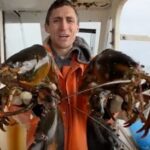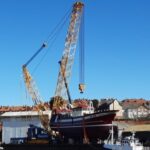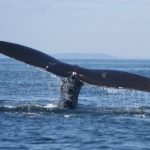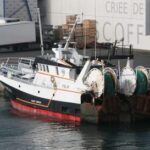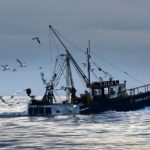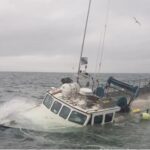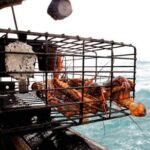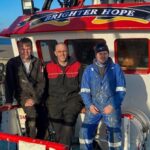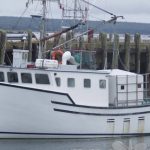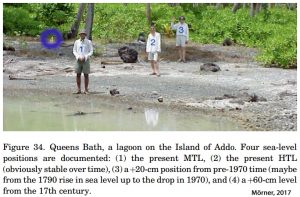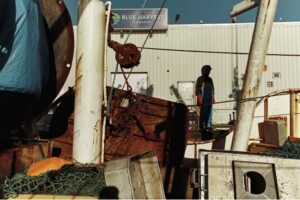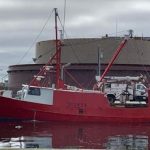Tag Archives: salmon farms
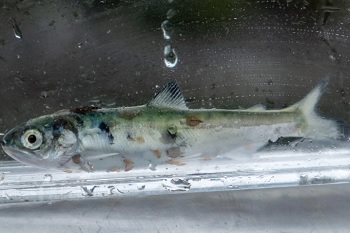
New Study – B.C. Salmon farms regularly under count sea lice, potentially putting wild salmon at risk
The study shows mandatory sea lice counts performed by the operators of the fish farms drop by between 15 and 50 per cent when they’re not being done during an audit by Fisheries and Oceans Canada (DFO). “That isn’t really a minor effect. This is a pretty obvious result,” said lead researcher Sean Godwin, who conducted the research for his PhD at Simon Fraser University. Salmon farms are required to perform monthly counts of the sea lice on their fish and make those numbers publicly available. The counts are self-reported, but fisheries officials perform occasional, pre-arranged audits to make sure the numbers are accurate. If the lice counts pass a certain threshold, the operators are required to pay for delousing treatments. >click to read< 15:59

The futurist
If you are an Alaska commercial fisherman or someone who simply cares about the fate of the state’s small, rural communities still dependent on commercial fishing as their economic reason to exist, you can consider the man in the expensive suit above the devil. He is Norwegian Bendik Søvegjarto, chief executive officer of a company called Bluegrove. He and Bluegrove want to transform the way salmon are raised. “Cost reductions will obviously make seafood producers more competitive and more profitable, even as the seafood they make becomes more affordable for their customers.” The key phrases there – if you are an Alaska commercial fishermen – are “cost reductions” and “more affordable.” >click to read, and read you must< 08:26
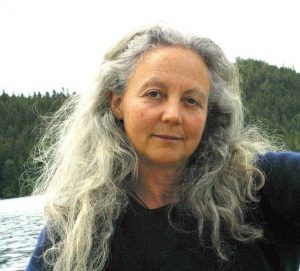
Alexandra Morton: Mark, set, go—reversing the salmon extinction trend
As a scientist and a grandmother, I want to make sure we don’t give up on wild salmon. This year, 2019, is the worst salmon return in the history of this country and the silence is terrifying. It feels like everyone is giving up. Salmon are masters at the art of thriving. They are so good at it all we need to do is listen to them and here is how. Politics aside, the pattern of the 2019 collapse is so clear Siri could navigate it. The Fraser sockeye, which swim through Atlantic salmon pathogens twice in their life history, crashed to 10 percent of what was forecast, while the Nass,,, >click to read< 09:24
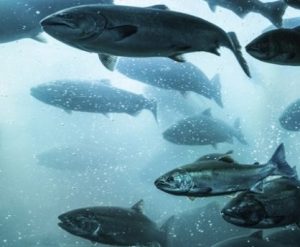
Russell Wangersky – Farmed Salmon: Left behind
It sometimes feels that we’re perpetually jumping onto a ship just about the same time as everyone else is abandoning it. And nowhere does it seem more like that than in the aquaculture business. As the plans steamroller ahead for a new massive Placentia Bay open pen Atlantic salmon project with the provincial government (and key regulator) fully onside, it’s hard to ignore that many others are moving in the other direction. In the state of Washington, a large-scale fish escape saw that state announce a ban on Atlantic salmon pen farming and a wind-down of existing operations. (The salmon aquaculture business in Washington is back under the microscope this month after 800,000 juvenile salmon had to be destroyed because they were found to be carrying a strain of Piscine orthoreovirus, which is dangerous for wild stocks of salmon.) >click to read<
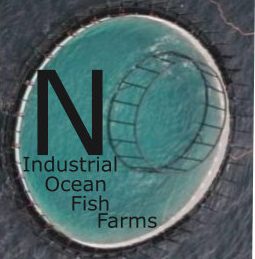
Moving salmon farms on land vital
You may have heard that the federal government has a new minister of Fisheries, Oceans and Canadian Coast Guard. Unlike his predecessor from the east, Jonathan Wilkinson is a West Coast man. Also unlike his predecessor, he will understand what the wild salmon mean to all of us on the B.C. coast. From Indigenous communities to whom the salmon have given physical and spiritual sustenance for millennia, to tourist and commercial fishing, and all of us who want to eat wild salmon that is unadulterated from chemicals; to bears and marine animals who depend on the wild runs, and the forests who are fed by salmon carcasses, the wild salmon is part of who we all are. by Paula Foot >click to read<12:00
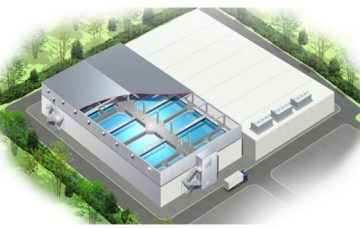
Stormy horizons – Salmon farms
Good news for Alaska commercial fishermen: Salmon last year ranked as the favorite fish at Japanese conveyor-belt sushi restaurants for the sixth year in a row, according to a survey by seafood processor Maruha Nichiro. Bad news for Alaska fishermen: “Ninety percent of that salmon is imported from Chile and Norway, but its popularity is now spurring domestic fish farming,” Nikkei Asian Review reported earlier this month. The report of Japanese domestic fishing farming might be the worst news of all. >click to read<09:02

Washington State could end net pens for fish by 2024
By 2024, Washington could ban all net pens where nonnative fish are raised commercially. A bill approved Thursday by the Senate Agriculture, Natural Resources and Water Committee would keep the state from renewing the existing leases as they expire between 2022 and 2024. No new leases are being issued but the state has legal obligations to honor current leases. The proposal also calls for an extensive study of the practice of raising fish in large pens by companies that lease space in Washington waters. It would be presented to the Legislature in January 2021. >click here to read< 14:41
New bill could put Washington salmon farms in jeopardy – >click here to read< 
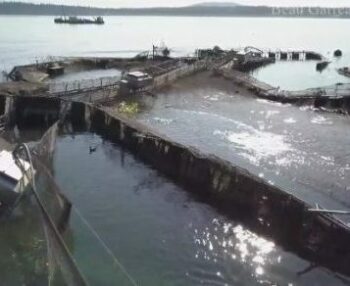
The science is in — salmon farms need to be out
The salmon-farm debate has come full circle with the recent escape of nearly 200,000 potentially invasive farmed Atlantic salmon 33 kilometres from B.C. waters in Washington state. Over the years, public outrages associated with this industry have unfolded like so many layers of a rotten onion: sea lice, viruses, organic pollution, 10 times the carcinogens in the flesh of farmed salmon versus wild, legal shooting of seal and sea lion “pests,” whales entangled in nets and anchor lines — and the list goes on. This is all unfolding against a backdrop of vehement objections from First Nations. click here to read the story 09:27
PAT NEAL: New threat to our threatened salmon – Here in the Pacific Northwest, there are 19 populations of salmon and steelhead listed as threatened under the Endangered Species Act. There are many reasons for this. click here to read the story 11:20
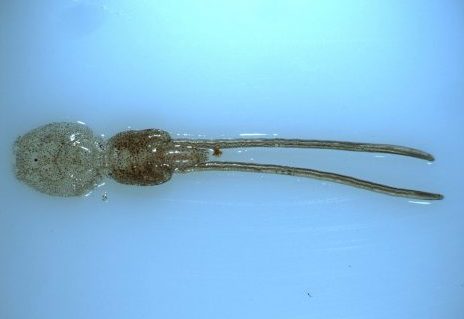
Parasitic sea lice plagues global farmed salmon industry
A surge of parasitic sea lice is disrupting salmon farms around the world. The tiny lice attach themselves to salmon and feed on them, killing or rendering them unsuitable for dinner tables. The lice are actually tiny crustaceans that have infested salmon farms in the U.S., Canada, Scotland, Norway and Chile, major suppliers of the high-protein, heart-healthy fish. Scientists and fish farmers are working on new ways to control the pests, which Fish Farmer Magazine stated last year costs the global aquaculture industry about $1 billion annually. click here to read the story 20:26
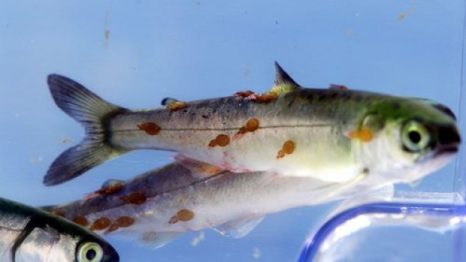
Salmon farms should be worried about more than just one species of sea lice
Migrating young sockeye salmon that are highly infected with parasitic sea lice grow more slowly, according to a new study from Simon Fraser University researchers. That matters, the experts said, because growing quickly can be the difference between life and death for vulnerable juvenile salmon. “Previous studies have shown that to survive to adulthood, young salmon need to get big fast,” said Sean Godwin, a PhD student at SFU and lead author on the study. “Those that grow more slowly — as we found, those heavily infected with sea lice — those fish are more likely to die.” Many people opposed to fish farms have raised concern over declining wild Fraser River sockeye and the potential for parasite transfer from salmon farms. click here to read the story 10:23
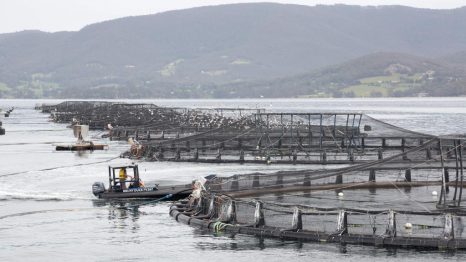
Meanwhile, in Tasmania – Drag fish farm regulation into 21st century
Sea based fish farms dump tonnes of faeces into the water. Think of them as a large toilet that does not flush. I cannot think of an industry in Tasmania other than aquaculture that is allowed to dump an unlimited amount of pollution in our waterways. Not only is there no limit on the amount of faeces salmon farms can dump in coastal waters, Tasmania also lacks science-based regulations to determine which parts of our coastline are suitable for salmon farms. International research shows that if you put fish farms in bays and harbours, where the water is shallow and current speed is low, fish faeces accumulates under cages, killing everything below them. Nitrogen discharged into the water column creates risk of harmful algal blooms, like the types we have seen worsening with increased salmon farms in the Huon and D’Entrecasteaux Channel. Other countries have responded to this research by offering incentives to move farming onshore. Read the story here 12:46
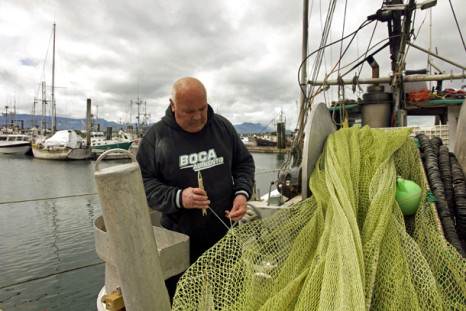
10 British Columbian Fishermen Offered $20,000 Compensation for Proposed Salmon Farms
The offer came shortly after a June private meeting between the shrimp fishermen and Grieg concerning the two salmon farms, which are proposed within two square kilometres of an existing Grieg farm in the Clio Channel in the Broughton Archipelago. Grieg is a subsidiary of a Norwegian aquaculture company. The fishermen are opposed to the farms because the two proposed sites occupy some of the best harvesting grounds in the region,,, Read the rest here 09:00
Alaska-made film takes aim at salmon farming

CBS Sixty Minutes – Saving the wild salmon
 May 11, 2014, 7:40 PM|Do salmon farms help or hurt the declining wild salmon population? Dr. Sanjay Gupta reports on the controversy surrounding the multibillion dollar industry. Watch the video here 15:28
May 11, 2014, 7:40 PM|Do salmon farms help or hurt the declining wild salmon population? Dr. Sanjay Gupta reports on the controversy surrounding the multibillion dollar industry. Watch the video here 15:28

































